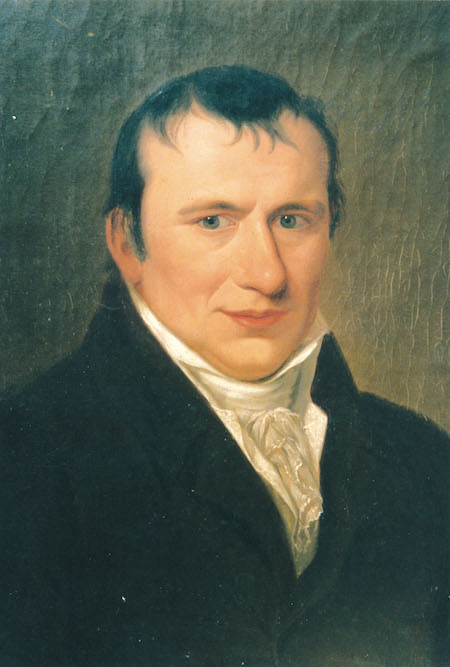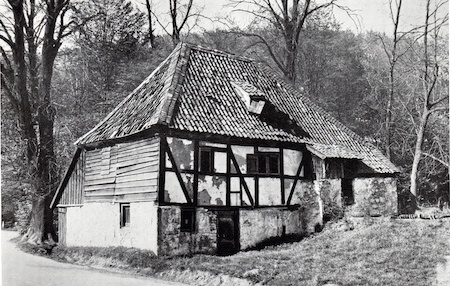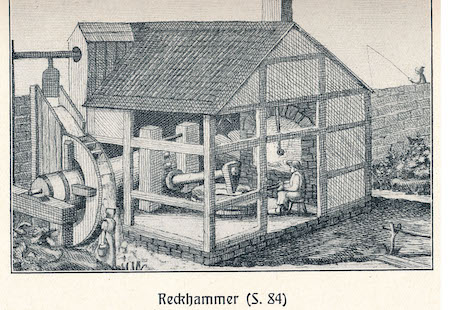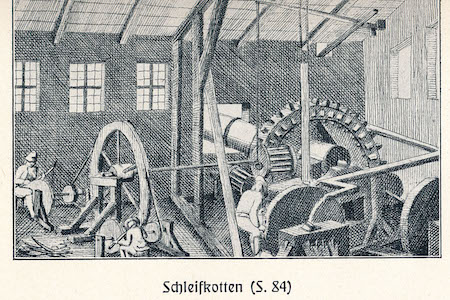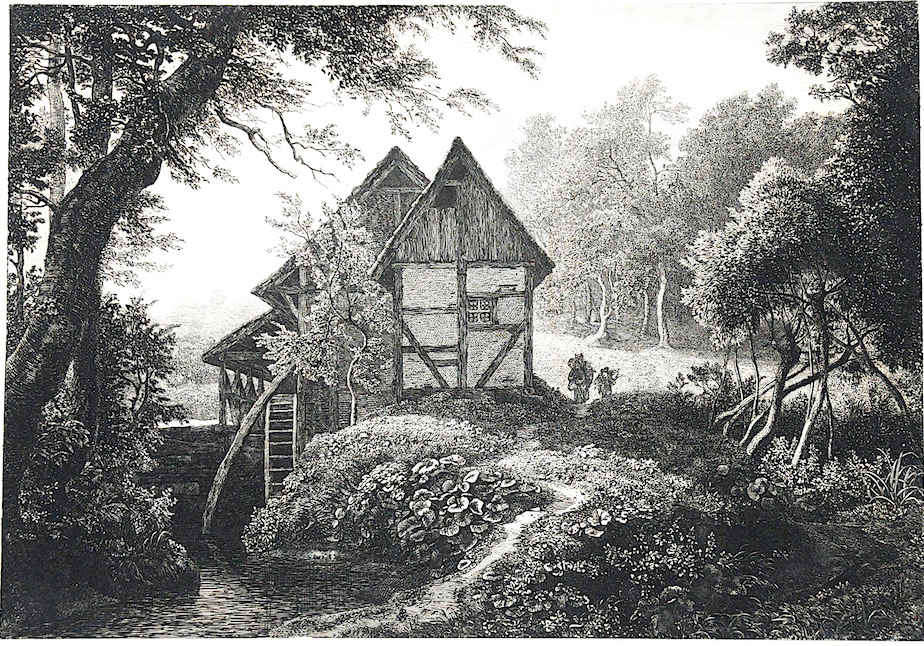History & cultural landscape
 n 1770 a later-born Henrich Wilhelm von Ahlhausen and his wife Maria Theresia von Ahlhausen née Schmidmann sold Ahlhausen Castle with all buildings and lands to the Gografen of the region, Moritz Bölling, Cologne high judge zu Schwelm in the Wetter administration office of the Counts of Mark, whose descendants owned it until 2012, before it came into the possession of the current owners. The most important of his descendants from Ahlhausen was his son Moritz Friedrich Heinrich Johann Diedrich (1775 – 1824), who, as a royal Prussian secret chief auditor and general procurator of the Prussian government, did a lot for the merger of the Napoleonic legal system with the Prussian one and who, together with his wife Wilhelmina Carolina Elisabeth Sehlhoff (1790 - 1871) and 3 of his 5 children are buried in the old burial crypt above the castle in the Ahlhausen forest, which is still accessible today. In 1812, he had the landscape map created to scale with the overall depiction of agriculture in Ahlhausen and the establishment of all land uses, which in the period from 2015 onwards provided us with the template for the new construction of an agriculture concept that is now accessible again and socio-spatially ecological - see "Solidarity Agriculture" - on Ahlhausen gave.
n 1770 a later-born Henrich Wilhelm von Ahlhausen and his wife Maria Theresia von Ahlhausen née Schmidmann sold Ahlhausen Castle with all buildings and lands to the Gografen of the region, Moritz Bölling, Cologne high judge zu Schwelm in the Wetter administration office of the Counts of Mark, whose descendants owned it until 2012, before it came into the possession of the current owners. The most important of his descendants from Ahlhausen was his son Moritz Friedrich Heinrich Johann Diedrich (1775 – 1824), who, as a royal Prussian secret chief auditor and general procurator of the Prussian government, did a lot for the merger of the Napoleonic legal system with the Prussian one and who, together with his wife Wilhelmina Carolina Elisabeth Sehlhoff (1790 - 1871) and 3 of his 5 children are buried in the old burial crypt above the castle in the Ahlhausen forest, which is still accessible today. In 1812, he had the landscape map created to scale with the overall depiction of agriculture in Ahlhausen and the establishment of all land uses, which in the period from 2015 onwards provided us with the template for the new construction of an agriculture concept that is now accessible again and socio-spatially ecological - see "Solidarity Agriculture" - on Ahlhausen gave.
But it wasn't just this probably more than 1000-year history of von Ahlhausen and the Böllings that shaped the landscape of the cultural landscape from Ahlhausen on the upper Ennepe with meadows, forests and ancient trees that have been preserved to this day - it was also the small one under the "Hohenstein", whose rocky cliff near Ahlhausen rises 80 meters into the sky, picturesquely cast into the landscape behind Ahlhausen in the floodplains like the meandering little river of the Ennepe itself, which contributed to the development of a cultural landscape. Because everywhere along its watercourse it supplied the hammer mills and mills of the neighboring farmsteads, which established the regional importance for the small iron industry here. Later, the floodplains of the Ennepe used as bleaching meadows on Ahlhausen and throughout the region contributed to the flourishing of the Bergisch trade in yarn and fabrics. Iron ore was smelted here and crude steel forged into ready-to-use goods as early as the Middle Ages, and an old hammer book from around 1595 records the iron trade that was probably run here from Ahlhausen by the noble family of the "Junckers" von Bönen. The von Ahlhausen family operated several hammer mills themselves, of which the Ahlhausen hammer and at least the foundations of the Brandshauser hammer are still visible today , if we can refer to the Hammerbuch, a guest house on Ahlhausen, where deals were concluded, deals were made and the proceeds – hopefully only partially – could be consumed immediately.
